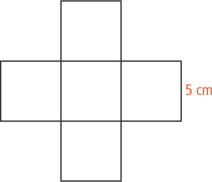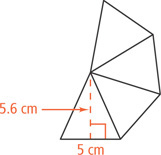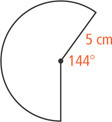Concept Byte: Finding Volume
Use With Lesson 11-5
ACTIVITY
You know how to find the volumes of a prism and of a cylinder. Use the following activities to explore finding the volumes of a pyramid and of a cone.
Activity 1
-
Step 1 Draw the nets shown below on heavy paper.
-
Step 2 Cut out the nets and tape them together to make a cube and a square pyramid. Each model will have one open face.


- How do the areas of the bases of the cube and the pyramid compare?
- How do the heights of the cube and the pyramid compare?
- Fill the pyramid with rice or other material. Then pour the rice from the pyramid into the cube. How many pyramids full of rice does the cube hold?
- The volume of the pyramid is what fractional part of the volume of the cube?
- Make a Conjecture What do you think is the formula for the volume of a pyramid? Explain.
Activity 2
-
Step 1 Draw the nets shown below on heavy paper.
-
Step 2 Cut out the nets and tape them together to make a cylinder and a cone. Each model will have one open face.


- How do the areas of the bases of the cylinder and of the cone compare?
- How do the heights of the cylinder and of the cone compare?
- Fill the cone with rice or other material. Then pour the rice from the cone into the cylinder. How many cones full of rice does the cylinder hold?
- What fractional part of the volume of the cylinder is the volume of the cone?
- Make a Conjecture What do you think is the formula for the volume of a cone? Explain.
Table of Contents
- 6-1 The Polygon Angle-Sum Theorems
- 6-2 Properties of Parallelograms
- 6-3 Proving That a Quadrilateral Is a Parallelogram
- 6-4 Properties of Rhombuses, Rectangles, and Squares
- 6-5 Conditions for Rhombuses, Rectangles, and Squares
- 6-6 Trapezoids and Kites
- 6-7 Polygons in the Coordinate Plane
- 6-8 and 6-9 Coordinate Geometry and Coordinate Proofs




